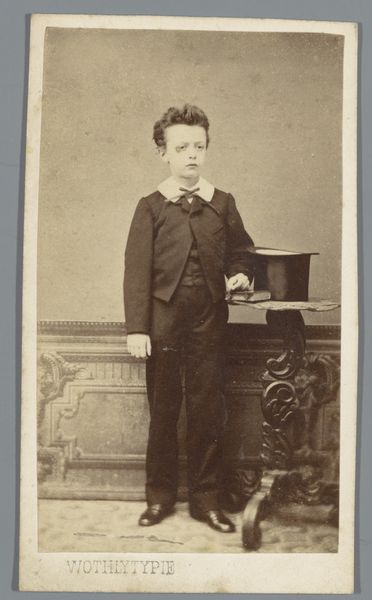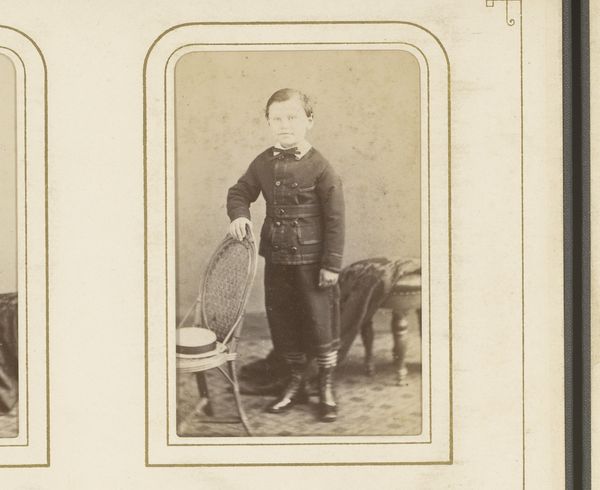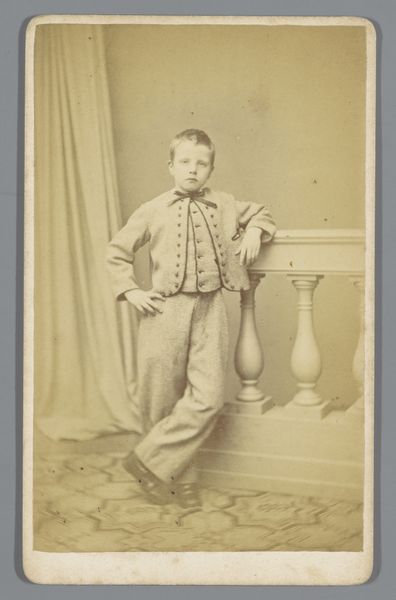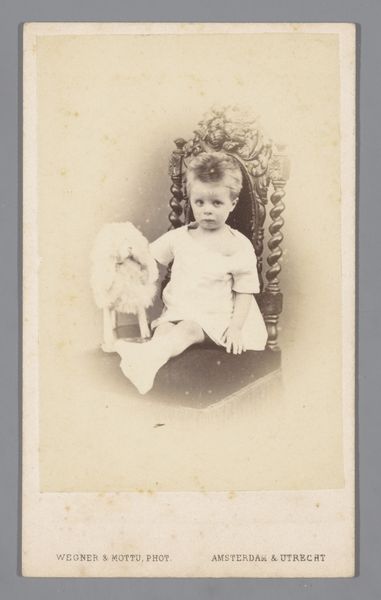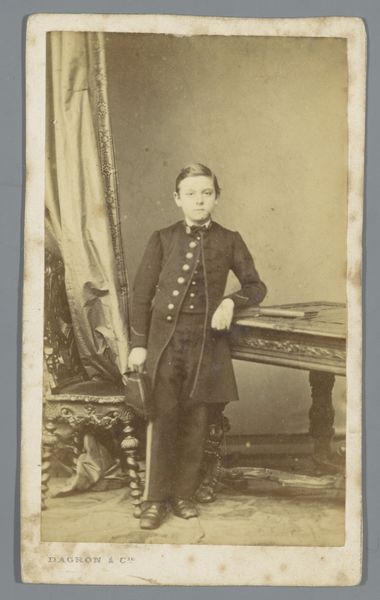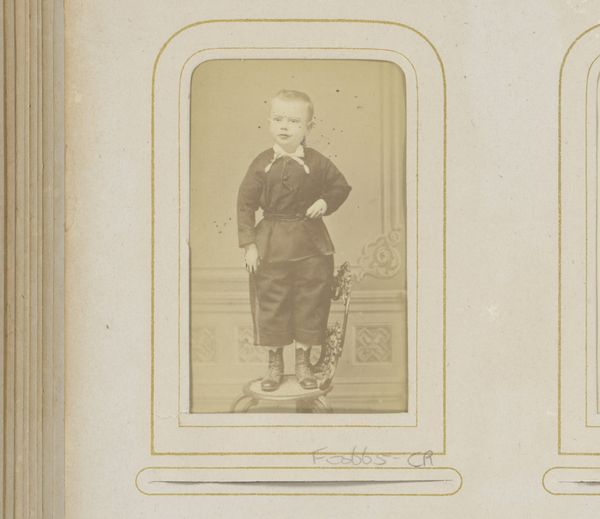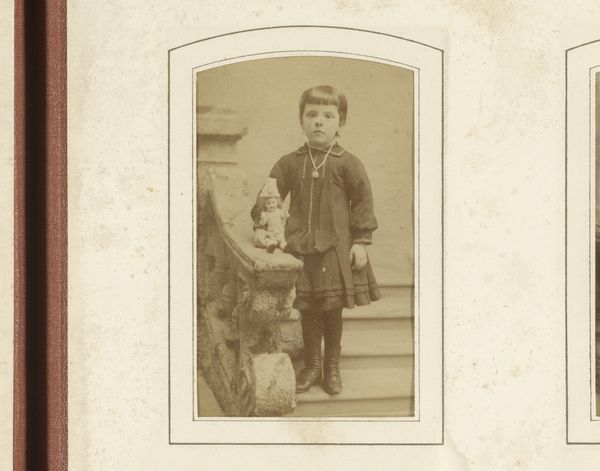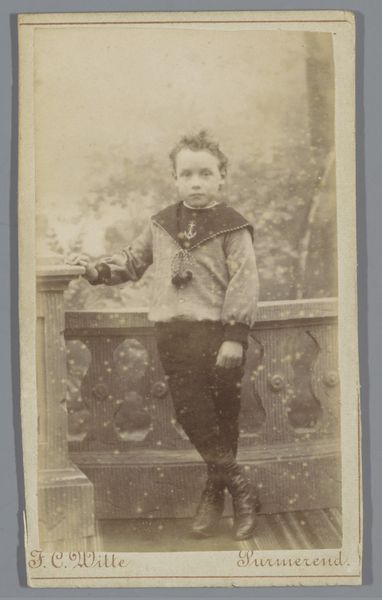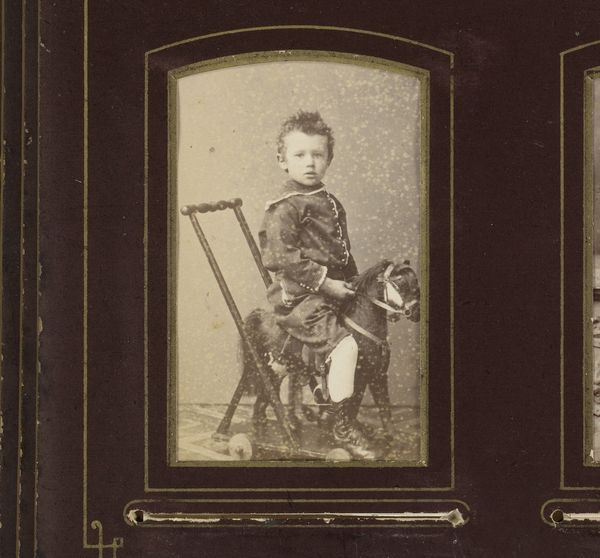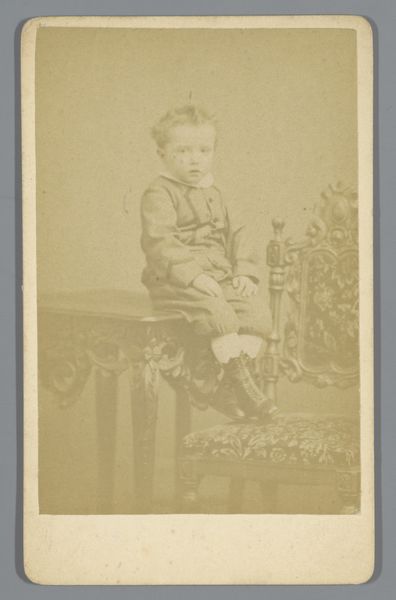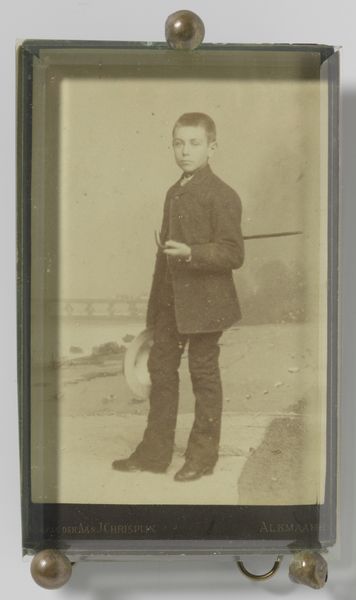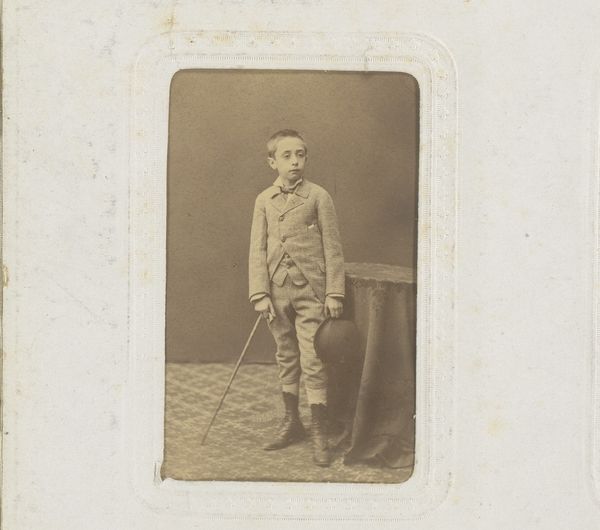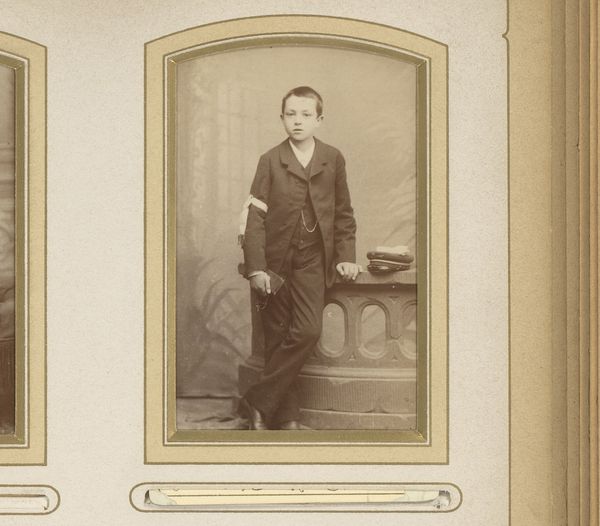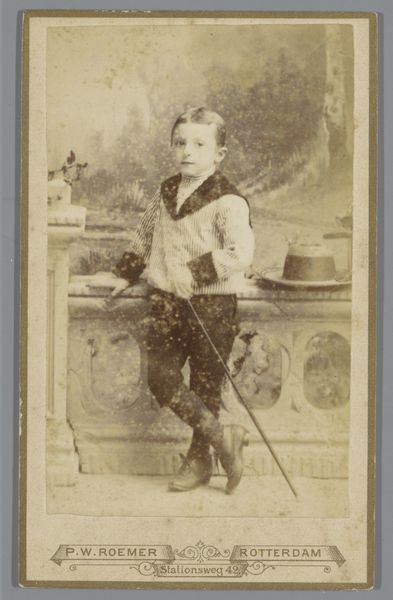
Portret van een onbekende jongen, staande naast een tafel waarop een hond zit 1865 - 1896
0:00
0:00
photography, gelatin-silver-print
#
portrait
#
dog
#
archive photography
#
photography
#
historical fashion
#
gelatin-silver-print
#
19th century
Dimensions: height 101 mm, width 62 mm
Copyright: Rijks Museum: Open Domain
This portrait of an unknown boy with his dog, was made by Kasparus Karsen in Amsterdam, using a photographic process. Photography in the 19th century involved a complex sequence of chemical treatments, a far cry from the point-and-shoot ease of modern cameras. Looking closely, you can see the sepia tones, a common characteristic of early photographic prints, derived from the processing of silver salts on paper. The inherent qualities of this method—the textures, the tonal range—impart a distinct aesthetic to the image. In the 19th century, photography democratized portraiture. It offered a means of capturing likeness that was once limited to the wealthy who could afford painted portraits. The rise of photography reflects broader shifts in society, towards increased industrialization and consumption. Photography became a viable career, and the production of portraits was mechanized. Understanding the materials and processes involved gives us insights into the social and cultural context of the artwork, underscoring photography's transformative role in art and society.
Comments
No comments
Be the first to comment and join the conversation on the ultimate creative platform.
